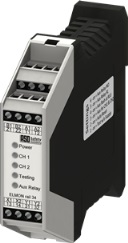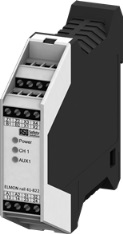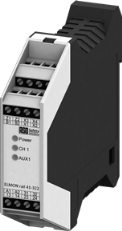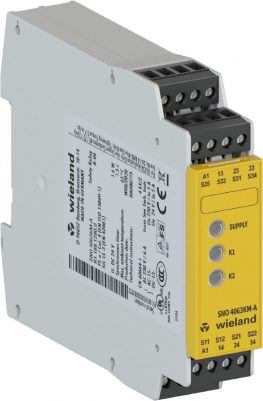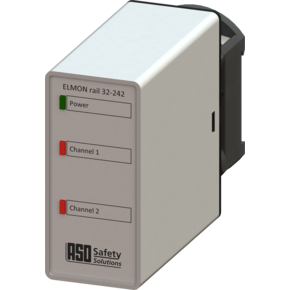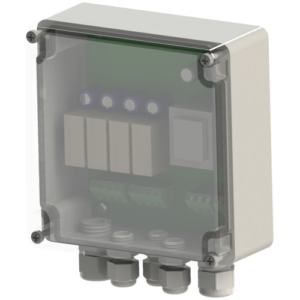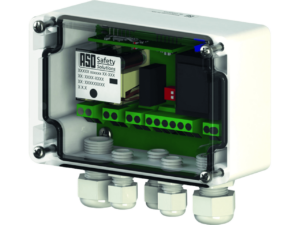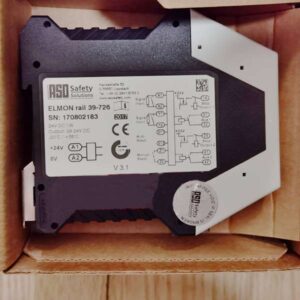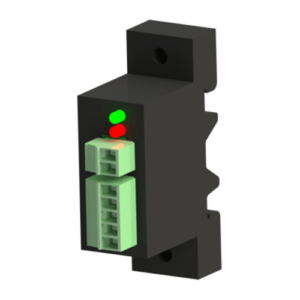Safety edge relays are specialized control units designed to evaluate signals from tactile sensors—such as safety bumpers, safety edge, and safety contact mats—used in hazardous…
Safety edge relays are specialized control units designed to evaluate signals from tactile sensors—such as safety bumpers, safety edge, and safety contact mats—used in hazardous machinery environments. Their primary safety function is to provide immediate response when an obstruction or contact is detected at the protected edge. This ensures personnel protection by triggering a controlled shutdown or signal to halt motion, thereby preventing injury.
Historical Context and Development
The evolution of safety edge relays is closely tied to increasing industrial safety requirements and automation complexity. Initially, simple mechanical limit switches were employed for edge detection. However, with the advent of advanced tactile sensors and a growing range of safety devices like light curtains and safety mats, dedicated safety relays became necessary to handle fault detection, provide accurate indication of edge status, and ensure compliance with modern safety standards.
Key Features of Safety Edge Relays
Configurable Design
Modern safety edge relays are engineered with a wide range of configurable parameters to adapt to various application needs. Whether integrated with safety bumpers, safety mats, or light curtains, they accommodate different sensor types and wiring configurations. Options like adjustable response time, multiple safety outputs, and compatibility with safety contact mats make them versatile across sectors.
Ethernet Connectivity
To support the digital transformation of factories, many safety relays now offer Ethernet connectivity. This enables remote diagnostics, real-time monitoring, and seamless integration with centralized safety control systems. Data such as fault detection logs, supply voltages, and LED indication of status can be accessed remotely, improving transparency and speed of response.
Robust Safety Measures
These relays support safety requirements in compliance with international standards. Features include screw terminals for secure wiring, clear LED indicators for immediate feedback, and robust casing to withstand harsh industrial environments. Built-in self-monitoring and redundancy functions ensure continuous protection even under fault conditions.
Types of Safety Edge Relays
Single Function Relays
These are dedicated to a specific safety function, such as processing a signal from a single tactile sensor or managing an emergency stop input. Ideal for simple installations, single function relays offer straightforward operation and fast response, ensuring reliable detection and signaling from safety devices.
Multi-Function Relays
Multi-function safety relays are designed to handle input from a variety of sources including safety bumpers, light curtains, and safety contact mats. They offer programmable logic, adjustable delay settings, and dual-channel redundancy. These units are suitable for systems requiring flexibility without a full-scale safety PLC.
Application-Specific Relays
Tailored for unique environments or tasks, application-specific safety relays might include enhanced support for edge monitoring, integration with safety mats in mobile platforms, or specific screw terminal layouts. They offer optimal performance when matched with defined safety requirements in sectors such as robotics or conveyor systems.
Applications of Safety Edge Relays
Emergency Stop Devices
Safety edge relays work alongside emergency stop systems by evaluating tactile feedback and halting operations when triggered. This ensures rapid disconnection of power or initiation of a shutdown sequence, protecting operators near hazardous machinery.
Guard Interlock Monitoring
When paired with guard doors and interlocks, safety edge relays verify the safe position of guards before allowing equipment to run. This adds a critical safety function, preventing machinery from operating unless safety conditions are met.
Two-Hand Control Systems
Used in press and stamping machines, two-hand control systems rely on safety relays to process simultaneous inputs. This prevents unsafe activation by ensuring both hands are on the control unit, minimizing accidental engagement.
Broader Integration with Safety & Automation Systems
Safety relays are a critical core of modern safety systems, but are only one part of an integrated architecture. These components will inevitably work in tandem with other critical components, beyond just safety edge, such as safety PLCs, safety contactors or safety light curtains (including muting light curtains) to ensure real-time hazard detection and safe machine shutdown. Common peripheral safety devices like the emergency stop button, two hand station, and emergency stop rope pull (as described above) are also key elements, managed by the logic structure of either the safety relay or safety PLC.
Advanced installations frequently incorporate safety non-contact switches, RFID switches, mechanical interlock switches, and/or solenoid locking switches—each adding specific protective functions to the machinery. To maintain continuous system health, engineers also deploy standstill monitors, speed monitors, soft starters, and reversing contactors within their automation frameworks. For measuring the product itself, solutions such as measurement light curtains can be integrated.
Beyond motion and logic safety, electrical condition monitoring is equally essential. Devices like insulation monitors, battery monitors, current monitors, voltage monitoring relays, phase sequence relays, undervoltage relays, and undercurrent monitoring relays are often integrated to detect anomalies in power flow or equipment performance, with this data displayable on HMI Touch Panels or similar systems. To support reliable operation, high-quality power relays and regulated power supplies are essential.
Benefits of Using Safety Edge Relays
Enhanced Operational Safety
By processing signals from safety input devices such as safety mats and tactile sensors, these relays significantly enhance operational safety. They minimize risks in environments with hazardous machinery, ensuring swift reaction to abnormal conditions.
Compliance with Industry Standards
Designed to meet global safety requirements, safety edge relays help companies maintain compliance with ISO and EN standards. Their integration supports a broader safety architecture that includes safety relays, safety output logic, and safety control units.
Reduced Downtime
Through features like LED indication of edge status and remote diagnostics, these relays reduce troubleshooting time. Fault detection mechanisms quickly identify system issues, helping to maintain production continuity and minimize unplanned downtime.
Implementation and Best Practices
Installation Guidelines
Proper installation involves secure wiring using screw terminals, correct alignment with tactile sensors, and ensuring appropriate supply voltages. Each safety function should be tested after installation to verify full responsiveness across all connected safety devices.
Regular Maintenance and Inspections
Periodic inspection of safety relays, including checking LED indicators, verifying tactile sensor response, and confirming supply voltage stability, is crucial. Scheduled maintenance helps prevent failures and ensures long-term system reliability.
Troubleshooting Common Issues
Common problems include miswiring of safety outputs, faulty tactile sensors, or incorrect supply voltages. Using models with built-in fault detection and LED indication simplifies troubleshooting. Logs from Ethernet-connected relays can further aid diagnostics, minimizing delays in restoring safe operation.
